, in whose printing studio Al’s drawings become prints.
This page briefly describes the meticulous process by which each image is hand printed.
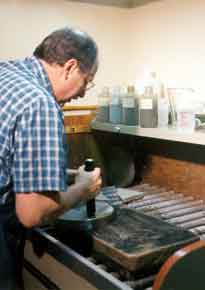 |
Limestone slabs used to produce Al Young’s lithographs were quarried in Bavaria. Each stone weighs approximately 100 lb., is 3 in. thick, and measures 16 in. x 20 in.
Before drawings can be made on a stone, Wayne grinds its surface to a fine texture. He uses a manually rotated disk, weighing 30 - 40 lb., to work powdered abrasives evenly over the stone’s surface.
Four granularities of abrasive are used successively to achieve the fine grain required for Al’s high-detail drawings. |
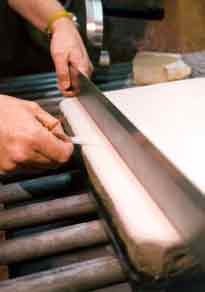 |
Once a stone’s surface has been grained, Wayne uses a metal bar, or straight edge, to verify that the surface of the stone is even.
Verification is achieved by laying the bar across the stone at various locations. At each location a small piece of thin paper, or glassine, is placed under the bar. If the bar grips the glassine, the area is assumed to be flat. This test is performed repeatedly along the bar.
After the stone’s surface has been grained and tested, it is ready for delivery to Al’s studio. |
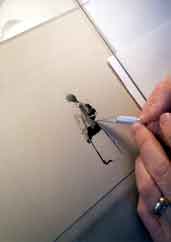 |
Al uses wax pencils and knives to draw images on the stone. |
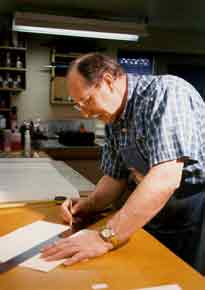 |
Paper for each edition must be torn to an 11 in. x 15 in. size prior to printing. Then each sheet must be marked (on what becomes the back of the sheet) with registration marks.
Wayne uses these marks, when placing the sheet on the stone, to ensure that the sheet is properly positioned. |
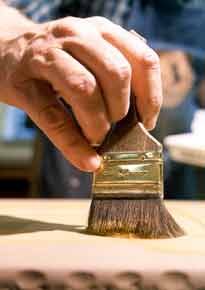 |
After Al has completed the drawings on the a stone, it is returned to Wayne for processing.
Rosin is brushed over the wax images Al has drawn on the stone’s surface. |
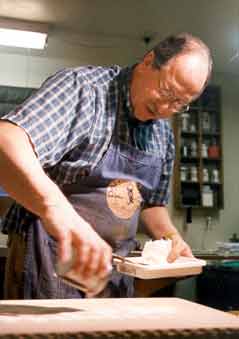 |
Talc is sprinkled over the stone’s surface to dry the wax images. |
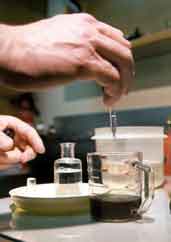 |
A mildly acidified solution of gum arabic is prepared. The strength of the solution, or
etch , that Wayne prepares for a particular set of images depends on the range of tones used in the drawings as well as on the softness of the wax used to achieve those tones.
This is one of the most critical steps in the printing process because of the extent to which a miscalculation can affect the images. |
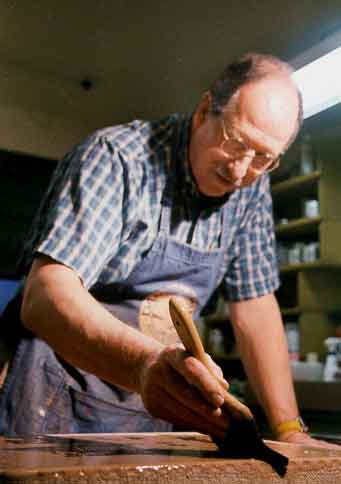 |
In the presence of the acidified solution, the grease of the wax images binds with the stone.
After the solution has been applied, the stone is carefully wiped down. |
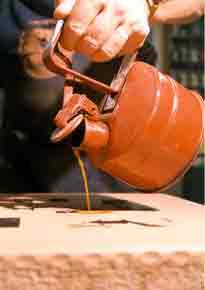 |
Lithotine is applied to the stone’s surface to remove the wax in which the images were drawn. |
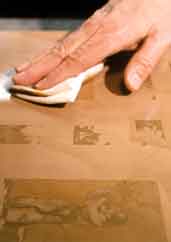 |
Asphaltum is applied, and adheres to areas where wax was located. |
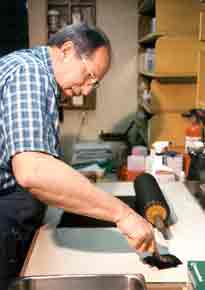 |
The leather roller is inked.
Three ribbons of ink are applied to the ink slab. Six to eight passes are made with the roller, being careful to ink it evenly. |
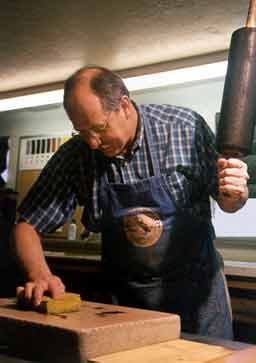 |
The stone is sponged with water preparatory to inking the images. |
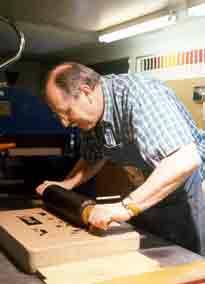 |
Ink is applied to the stone.
The seam in the roller is one of the factors that must be dealt with in this part of the process. The seam must not fall over an inked area, but must fall between the images.
The number of passes and the direction of the passes of the roller are planned according to the images being printed. |
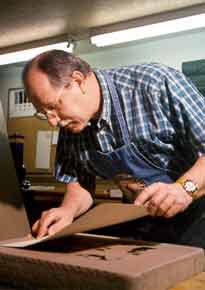 |
Each page to be printed is laid onto the stone according to registration marks scribed onto the stone’s surface. |
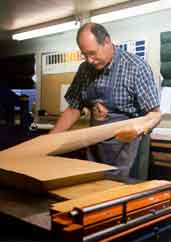 |
After the printing paper has been placed on the stone, a sheet of newsprint is placed on top of it. A tympan is then applied over the newsprint.
The tympan comes in contact with the scraper bar of the press, and transfers the vertical pressure to the printing paper so that the printing paper doesn’t move. |
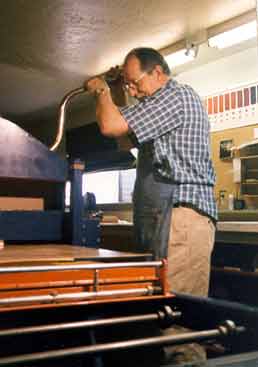 |
Pressure is applied to the printing element, or stone.
The scraper bar used to apply pressure to a stone must be adjusted to accommodate the height of each stone. |
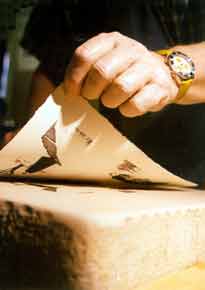 |
Wayne pulls the print. |
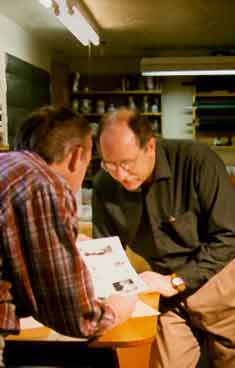 |
Once a set of trial proofs has been printed, Al and Wayne evaluate them.
Any adjustments deemed necessary are discussed, and decisions are made concerning the printing of an edition. For example, paper is selected, number of impressions, and other matters are finalized.
The work of printing an edition is enormous. Inking the roller, sponging the stone, inking the stone, etc., etc., are tasks repeated for each impression. |
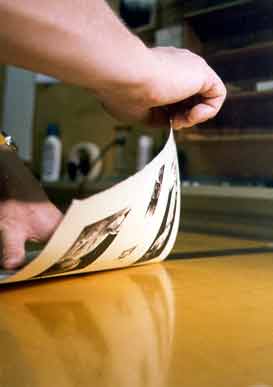 |
After all of the impressions have been made, the work of tearing down the pages begins. In the picture at left, Wayne uses a tear bar to separate the images printed on each sheet.
A stone containing four images, for example, might require three tears in order to separate the prints. For an edition of 100, this means 300 tears.
Torn prints are stored on sheets of newsprint, on which Wayne writes the designation to appear on the print when signed (for example, "artist proof", "workshop proof", "trial proof", "bat", or the print’s sequence number in the arabic part of the edition). |
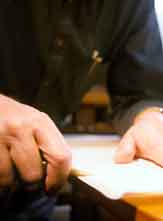 |
Some prints, because of where an image is drawn on the stone, fall along the outside (deckled) edge of the sheet of paper on which the images are printed. Other images may not fall along a deckled edge.
Wayne burnishes each torn edge of each print. |
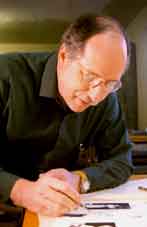 |
The quality of each print is examined as part of
curating the edition. |
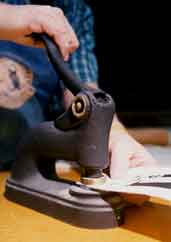 |
If the size of the print allows, Wayne’s chop is embossed into the margin of each print as the traditional
signature of the printer. |
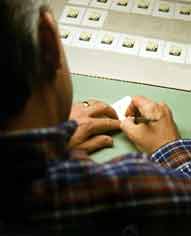 |
Al signs each print. |
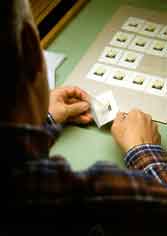 |
Each print is then placed in a glassine sleeve and is stored with the rest of the edition. |